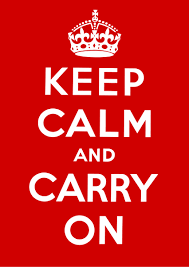Short OSCE part 3
9.Patient,Para 3,known case of adenomyosis,will be undergone hysterectomy.Assess the patient risk factor for the operation and counsel the patient on hysterectomy.
-We are expected to do the pre-op assessment for the patient,look for any comorbids such as heart disease,DM,smoker etc.
-In our case,patient has low hb,signs and symptoms of anemia.Otherwise,she has no other co-morbids.
-For counselling,explain the indication,process that are going to be done-BEFORE,DURING and AFTER the operation,and complications,also the needs for alternatives if something goes wrong.
-Patient asked can the ovary be removed,in this case,the answer is YES.This is because the patient has completed family and to prevent further similiar problem to reoccur again.
-Patient asked will you give any pills for her.Yes,we need to give hormonal replacement therapy for her if necessary,and we will follow up the patient to monitor the side effects of HRT.
10. Patient is a known case of hemolytic anemia.Perform a focused abdominal examination and examiner will ask you a few questions.
-Diagnosis:Thalasemia
-Look for scars,subcutaneous injection mark of iron chelation therapy,pallor,jaundice and feel for hepatosplenomegaly (patient has all of them)
-Examiner will ask what is the diagnosis why do you say so.
Thats all! I personally feel that short OSCE is more challenging as you have to walk fast,think fast,talk fast.
One word of advise,which our lecturer always tell us,and its sometimes easier to be said than done but it is very true.
"If you did badly in one station,MOVE ON,dont drag it to the following stations,what it is done is done."
and It makes me think of this

9.Patient,Para 3,known case of adenomyosis,will be undergone hysterectomy.Assess the patient risk factor for the operation and counsel the patient on hysterectomy.
-We are expected to do the pre-op assessment for the patient,look for any comorbids such as heart disease,DM,smoker etc.
-In our case,patient has low hb,signs and symptoms of anemia.Otherwise,she has no other co-morbids.
-For counselling,explain the indication,process that are going to be done-BEFORE,DURING and AFTER the operation,and complications,also the needs for alternatives if something goes wrong.
-Patient asked can the ovary be removed,in this case,the answer is YES.This is because the patient has completed family and to prevent further similiar problem to reoccur again.
-Patient asked will you give any pills for her.Yes,we need to give hormonal replacement therapy for her if necessary,and we will follow up the patient to monitor the side effects of HRT.
10. Patient is a known case of hemolytic anemia.Perform a focused abdominal examination and examiner will ask you a few questions.
-Diagnosis:Thalasemia
-Look for scars,subcutaneous injection mark of iron chelation therapy,pallor,jaundice and feel for hepatosplenomegaly (patient has all of them)
-Examiner will ask what is the diagnosis why do you say so.
Thats all! I personally feel that short OSCE is more challenging as you have to walk fast,think fast,talk fast.
One word of advise,which our lecturer always tell us,and its sometimes easier to be said than done but it is very true.
"If you did badly in one station,MOVE ON,dont drag it to the following stations,what it is done is done."
and It makes me think of this